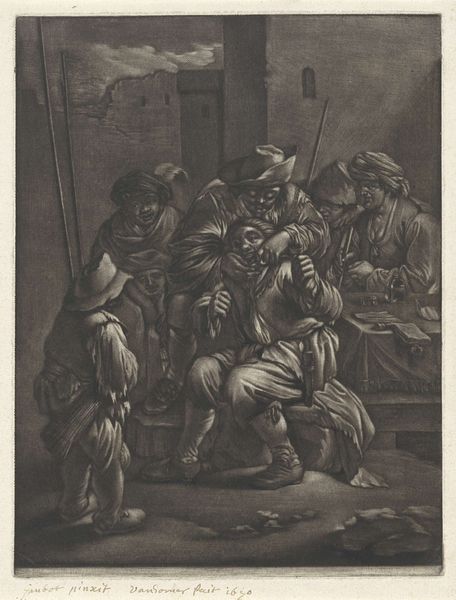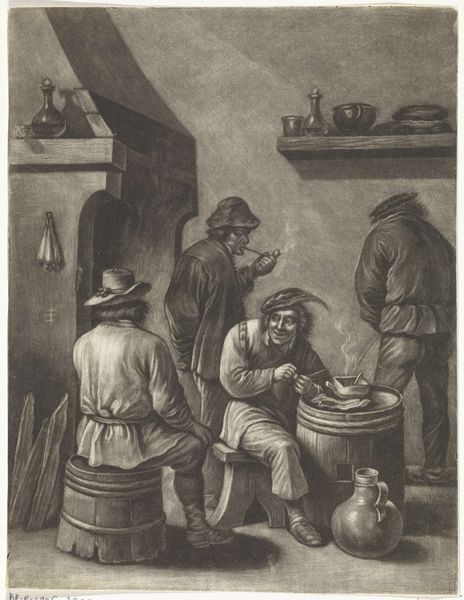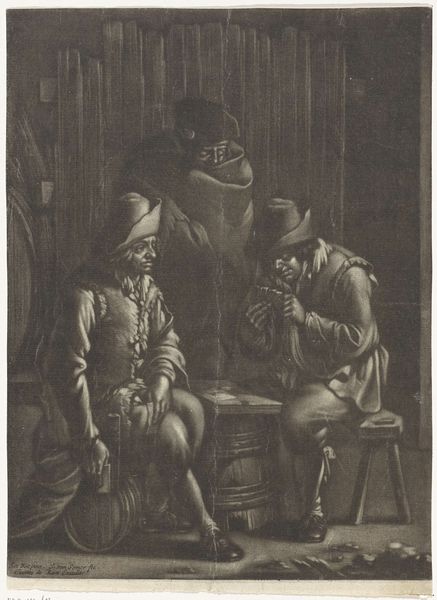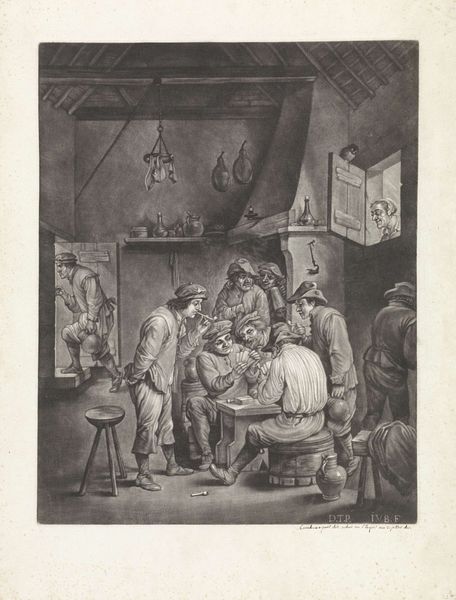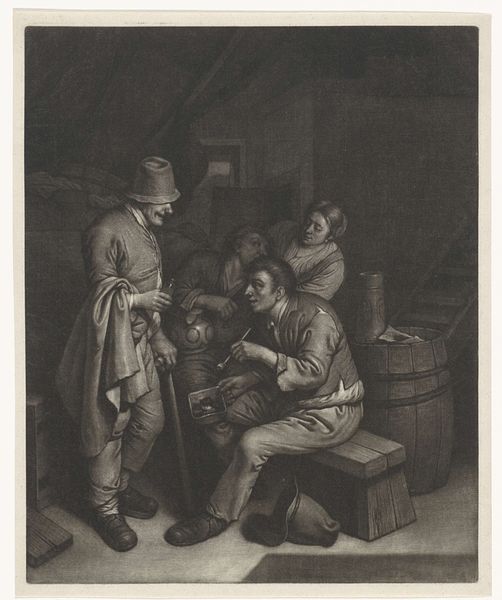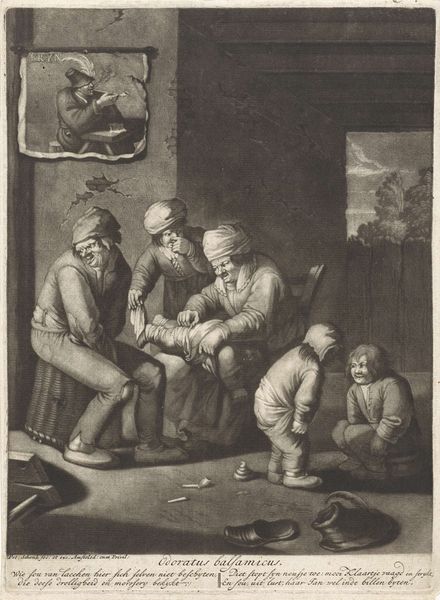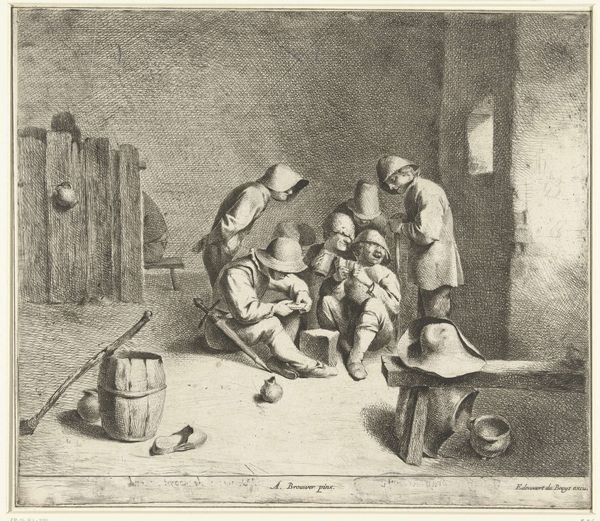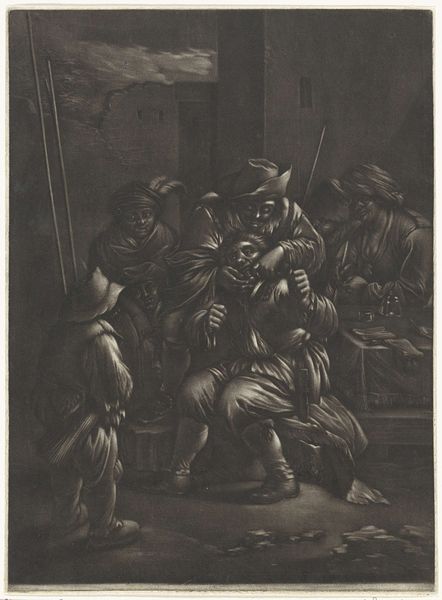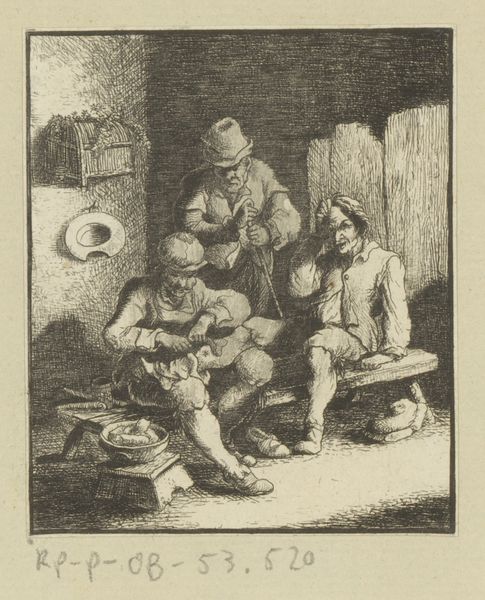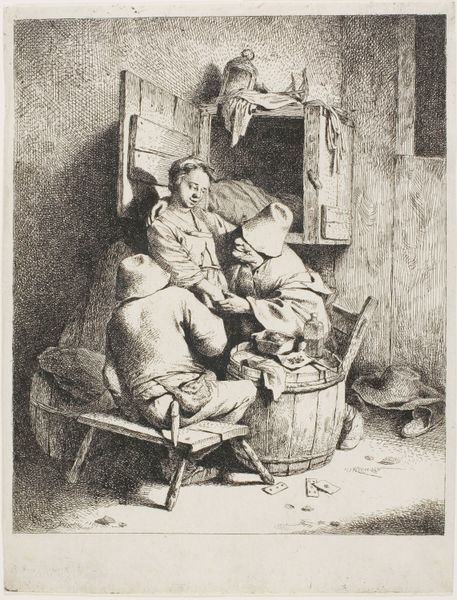
drawing, print, etching, ink
#
drawing
#
baroque
#
dutch-golden-age
# print
#
etching
#
charcoal drawing
#
charcoal art
#
ink
#
pencil drawing
#
genre-painting
#
charcoal
Dimensions: height 263 mm, width 191 mm
Copyright: Rijks Museum: Open Domain
Curator: Here at the Rijksmuseum, we have "Mannen bij de haard," created sometime between 1658 and 1706 by Wallerant Vaillant. It's an etching, capturing a genre scene. My immediate impression is one of shadowed intimacy. The tones created with ink suggest a quiet moment by the fireside. Editor: Absolutely, there's a distinct feeling of homeliness emanating from this print. Consider the texture Vaillant achieved using etching—the layering, the visible lines giving depth to what could otherwise be a flat representation of these men gathered around the fire. It makes one think about the etcher’s hand, doesn't it? The labor behind reproducing this scene and, by extension, what the laborers in the scene themselves may be experiencing. Curator: And what story could the symbols within this print reveal? The fire itself is key; its light dances upon their faces, offering them both literal warmth and also suggesting an allegorical idea: of home, friendship and simple human connection. Editor: Precisely. The presence of those pipes signals not only leisure but perhaps trade and commerce too, reminding us that even the most mundane tools are tied into intricate socioeconomic systems. I would love to study their clothes, perhaps look at where and how the fabrics were made. These details tell of networks of production extending far beyond the depicted interior. Curator: I do like that connection to social history through these characters! But notice how carefully Vaillant stages their gestures around the central focal point of light—the fire and food being prepared over it. Are they warming themselves, cooking a meal, or simply enjoying the company? Editor: It strikes me that what is perhaps missing, or not focused on here, are the stories of the raw materials themselves – Where did this pewter and earthenware come from and how was it distributed, processed, consumed? That's part of the story I'm drawn to as well. Curator: So well expressed, that's a view I value as well. Considering the subtle use of light and shadow along with an obvious feeling of comradery, Vaillant created a timeless scene that will invite viewers to reflect on social life of this period. Editor: I agree. Thinking about labor, both within the artwork's depiction and its production allows for a greater appreciation for its cultural importance beyond artistry, bringing Dutch Golden Age society into clearer view.
Comments
No comments
Be the first to comment and join the conversation on the ultimate creative platform.
